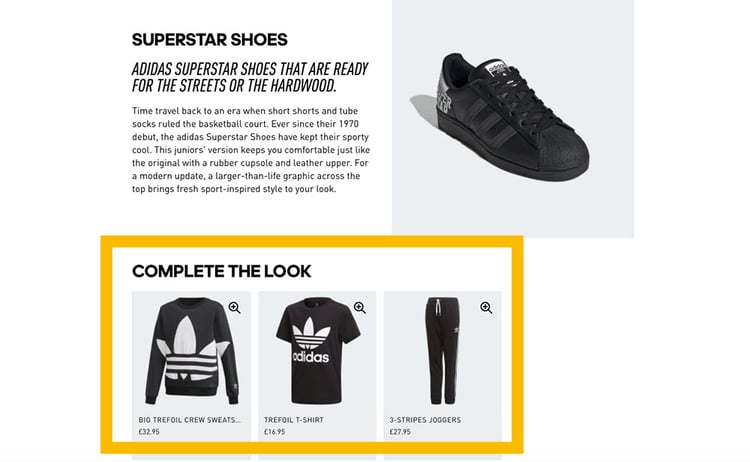4 Ways to Improve Your Customers' Online Shopping Experience with PIM

Keep the good stuff coming
Subscribe to our blog newsletter and get monthly content that helps you manage product data smarter.
No spam. Just real value.
We know that ecommerce has slowed down compared to the previous two years. However, there are about 2.4 billion people in the world who still are eager to continue shopping online.
They prefer online shopping for a myriad of reasons, including the convenience that it comes with. A National Retail Federal consumer report explains that convenience in the retail landscape is ever evolving, but today’s customer behavior shows that it can mean personalized experiences, buy online, pick up in store (BOPIS), buy now, pay later, fast delivery, free shipping, and so much more.
And, what we’ve learned in the past year is that these factors play a significant role in customer experience, which is now in demand more than ever before. As a result, retail leaders are confronted with the question of how to best drive customer experience that meets (and exceeds) customer expectations.
Considering that 85% of customers use product information as the first step in deciding what to buy, we’d say quality product information is the correct starting point. In a highly competitive industry such as ecommerce, your products need to stand out, attract, and retain an engaged customer base.
The information attached to your products can help you achieve that goal. This is why a lot of online brands use product information management (PIM) software to improve the quality of their product information, which in turn improves customers’ shopping experiences. Let’s dig a little deeper into this.
How to improve online customer experience with PIM
Today’s customers are fickle, they bounce from one brand to another without hesitation. If your webshop or product listing page is riddled with product information errors or inconsistencies, they won’t think twice about switching to your competitor. Customers desire frictionless shopping experiences, from the time they discover or search for a product to the time they receive it on their doorstep.
For example, Gidon Sadovski, founder of Overnight Glasses, emphasizes the role that user experience plays in online shopping by stating: “At Overnight Glasses, we’ve found that focusing on the small details of the shopping experience, from seamless store navigation to fast shipping times, directly impacts customer satisfaction and conversions. Ensuring that every touchpoint is optimized for the user helps build trust and keeps customers returning.”
So, you have to make sure that you create seamless shopping experiences from the moment they start engaging with your brand and products. A product information tool can help you with that. It enables you to:
1. Create and store rich product information
If your website or listing doesn’t have all of the information that customers need to make a purchase decision, they will walk away.
For example, if a customer lands on one of your products and is drawn to it, but the product description doesn’t fully explain the benefit the product offers or there’s no pricing or availability information, they won’t buy the product. And they definitely won’t buy it if they find mismatched product detail. These frustrating shopping experiences will give your customer no choice but to go shop elsewhere.
Unfortunately, when you manage all of your product content using spreadsheets, it's challenging to ensure that the information is complete and detailed enough to add value to customers. A PIM system, on the other hand, stores information in a single location, giving you a clear overview of your products. A good PIM tool helps you spot product content errors and duplicates, all while helping you find opportunities to enrich your product content to meet the needs of customers.
Plytix, for instance, has a product completion tracking feature that shows you what products are lacking information. Our tool also has a bulk product editing feature that’s good for improving products with similar attributes.
2. Prepare and store high-quality digital assets
Having rich written product information is only half the battle won. Digital assets, such as images and videos, are the next non-negotiable elements in the ecommerce shopping experience. Customers rely on these elements to gain a better understanding of the product they’re looking to buy. Not only that but you also have to include at least 3 to 4 images from different angles to give a full view of the product. In fact, studies show that customers prefer to see a product in action before they buy.

Remember that they can’t physically see the product to assess what it looks like and whether it fits their individual preferences. So, when you get your product photography right and use ecommerce videos, you enhance their online shopping experience because now they have a visual idea of what the product looks like and how it works.
While spreadsheets can store product images, they’re not equipped to manage the quality of images nor can they store multiple images of a single product. Most importantly, spreadsheets can’t store video, but PIM software with digital asset management (DAM) capabilities can because it’s designed to handle the complexities of different types of visual assets.
And, when we say different types of visual assets, we’re including PDFs from product catalogs, product sheets, and other sales enablement sheets customers usually need to decide on the products to buy. So, yes, there are a lot of things that PIM can do that spreadsheets can’t.
3. Create cross-selling opportunities
So, now you’ve got rich product information and quality visual assets, but you’re not quite done yet. You can take things a step further by creating cross-selling opportunities. Cross-selling helps customers discover complementary or related products to the products they’ve already shopped or browsed through.
This somewhat small task can improve a customer’s experience as it can reduce their search or discovery for products they may be interested in. Especially if you get it right and tailored according to each customer’s shopping and browsing behavior. A good catalog management system like Pytix comes with a product relationships feature that lets you create cross-selling options (as well as upselling and product bundling).
When you proactively provide add value by giving customers what they ask for, and do it seamlessly, they’re more likely to be impressed with your brand and keep you top of mind when it’s time to shop again.

4. Create multichannel presence and engagement
Customers are not tied to a single shopping channel. They buy products where it’s most convenient for them. Between comparison shopping engines, marketplaces, and social commerce platforms, customers have plenty of options to choose from. If you’re only available on your webshop, not only are you doing your business a disservice, but you’re also impacting your customers’ experience.
For example, a customer might shop in a marketplace because they can buy a lot of different products from different brands there. So, if your product isn’t available on this channel, you’re making them put in extra effort as they have to specifically go to your ecommerce platform to shop for your product. They even have to think about the different shipping costs and delivery times, unlike in a marketplace where most shipping costs and delivery times are consistent across all brands. It can be a huge inconvenience to your customers.
The reluctance to join the multichannel ecommerce revolution can be tied to product information management. We’ll admit, it can be difficult to manage complex sets of information for different channels, especially when you take into consideration that these channels have their own requirements. But that’s where Plytix, and other PIMs, come to the rescue.
All of your product information can exist in a single source of truth, and all you’d have to do is tweak and update the information according to the requirements of your chosen channels. With PIM, multichannel data management doesn’t have to be a headache. So, get started on your multichannel selling strategy today.
As you can see, you can improve the shopping experiences for your customers with a PIM tool. And, you can meet your customers’ expectations without suffering from the tedious manual data entry tasks, because you have a PIM that streamlines the work, which saves you time, effort, and money.
Want to learn more about the benefits of PIM? Download our FREE whitepaper on the Ultimate PIM Buyer’s Guide. Don’t be afraid to book a demo with us today for a more tailored experience and to get answers on how Plytix can help you improve your customer’s experiences.

What if your product data actually worked for you?
We’ll show you how Plytix helps you stop fixing data—and start using it.
Related posts
Keep the good stuff coming
Subscribe to our blog newsletter and get monthly content that helps you manage product data smarter.
No spam. Just real value.





Think others should see this?
Go ahead and share it.